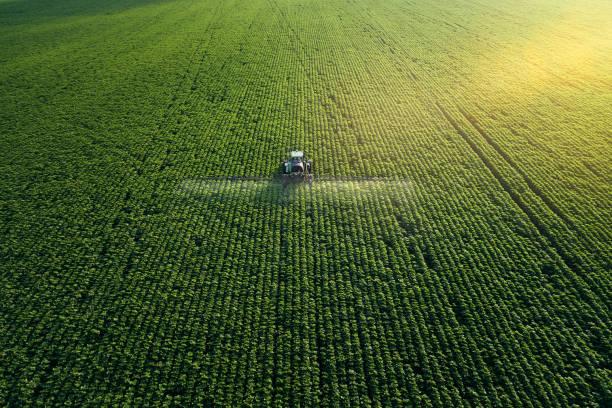The agricultural industry is at a pivotal crossroads, where rising consumer awareness and regulatory changes are reshaping farming practices around the globe. Central to this transformation is the Biopesticides Market, which has rapidly evolved from a niche category to a mainstream solution in modern farming. Unlike conventional chemical pesticides, biopesticides are derived from natural organisms, including bacteria, fungi, and plant-based compounds. Their adoption is fueled by increasing concerns over soil health, food safety, and long-term environmental impact.
The global agricultural sector is entering a transformative phase characterized by an urgent shift toward sustainability. Conventional methods that once relied heavily on synthetic chemicals are becoming increasingly unsustainable due to ecological damage, health risks, and regulatory constraints. Farmers, policy makers, and agribusinesses are moving toward natural and eco-friendly alternatives, and biopesticides are at the forefront of this change. Their ability to enhance crop productivity while reducing environmental harm makes them a central driver of the agriculture revolution.
The Biopesticides Market is experiencing substantial momentum as stakeholders recognize the benefits of microbial-based and botanical pest management solutions. Governments across regions are actively implementing reforms that incentivize organic farming and minimize synthetic pesticide usage. These initiatives, paired with rising consumer demand for chemical-free produce, have significantly bolstered the adoption of biopesticides across all categories of farmers, from small-scale cultivators to industrial producers.
Key Biopesticides Market Trends reveal a dynamic future for the industry. Technology-driven solutions, including precision agriculture and AI-enabled farming, are being integrated with biopesticide applications to maximize efficiency and coverage. Moreover, research advancements have improved the storage stability of microbial formulations, eliminating former limitations of shorter shelf-life. Increasing collaborations between agritech giants and regional suppliers further ensure product accessibility in diverse markets, particularly in the fast-growing Asia-Pacific region.
North America and Europe remain dominant markets, due to strict regulatory frameworks that favor natural crop protection. However, Asia-Pacific is emerging as a promising region, supported by government subsidies aimed at steering farmers away from chemical pesticide dependency. Additionally, Latin America’s growing export-oriented agriculture also creates strong demand for biopesticide products that meet international food safety standards.
Looking forward, long-term growth will rely on innovation, cost-effectiveness, and widespread education to boost farmer adoption. Market leaders are focusing on training programs, awareness campaigns, and field trials to demonstrate efficacy. As food security and environmental concerns rise in parallel, the biopesticides market is expected to ride on strong global momentum, securing its position as a cornerstone of sustainable agriculture.
Market leaders are now investing heavily in research to improve formulation stability, enhance shelf life, and expand application methods. This innovation is not just aligning with regulatory pressure but also catering to the shifting preferences of global consumers who want safer, residue-free produce. As governments incentivize eco-friendly farming, the role of biopesticides could become even more central in the coming decade, positioning them as an indispensable pillar of future food security.
FAQ
- Who are the key players in the biopesticides market?
Some of the prominent companies mentioned in the MRFR report are:
- BASF SE (Germany)
- Bayer AG (Germany)
- Syngenta AG (Switzerland)
- Valent BioSciences LLC (US)
- Certis USA LLC (US)
- Koppert Biological Systems (Netherlands)
- Biobest Group NV (Belgium)
- AgBiTech Pty Ltd (Australia)
- R&D for target-specific / pest-specific formulations to improve efficacy.
- Development of new delivery systems (e.g., more stable formulations, better shelf life).
- Expansion of e-commerce or direct-to-farmer channels for biopesticide sales.
- Greater integration with precision agriculture practices — e.g., using data to optimize where and when biopesticides are applied.
- Increasing adoption in emerging markets, especially in Asia-Pacific and MEA, due to rising organic farming and environmental regulations.
Table of Contents
- Executive Summary
- Market Introduction
- Market Dynamics
- Market Segmentation
- Regional Analysis
- Competitive Landscape
- Future Outlook
- Conclusion
- Appendix
About Market Research Future
At Market Research Future (MRFR), we enable our customers to unravel the complexity of various industries through our Cooked Research Report (CRR), Half-Cooked Research Reports (HCRR), Raw Research Reports (3R), Continuous-Feed Research (CFR), and Market Research & Consulting Services. MRFR team have supreme objective to provide the optimum quality market research and intelligence services to our clients. Our market research studies by products, services, technologies, applications, end users, and market players for global, regional, and country level market segments, enable our clients to see more, know more, and do more, which help to answer all their most important questions.
Contact Us
Market Research Future (part of Wantstats Research and Media Private Limited), 99 Hudson Street, 5Th Floor, New York, New York 10013, United States of America
𝐂𝐨𝐧𝐭𝐚𝐜𝐭 𝐍𝐮𝐦𝐛𝐞𝐫: +1 (855) 661-4441 (US) | +44 1720 412 167 (UK) | +91 2269738890 (APAC)



